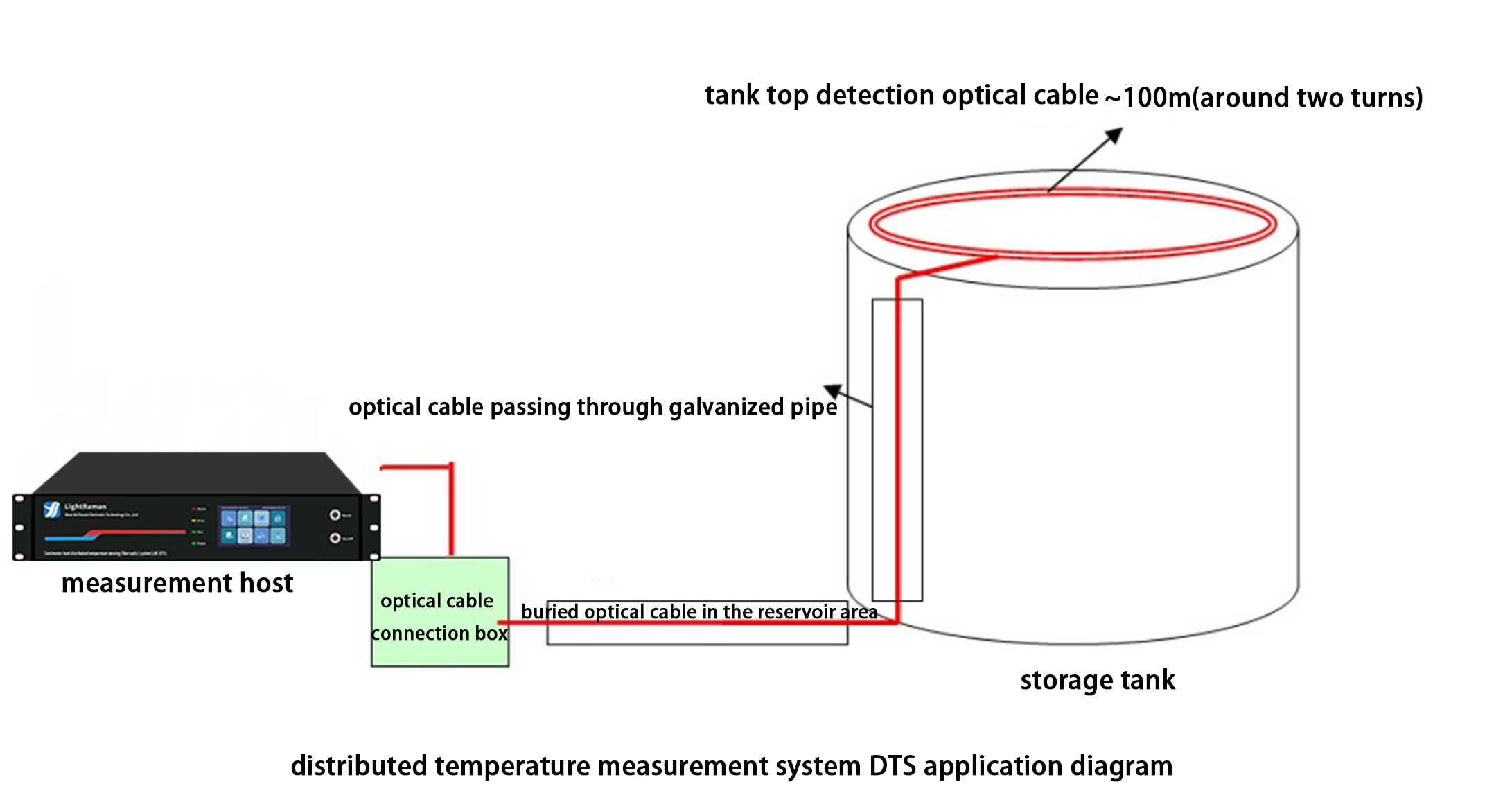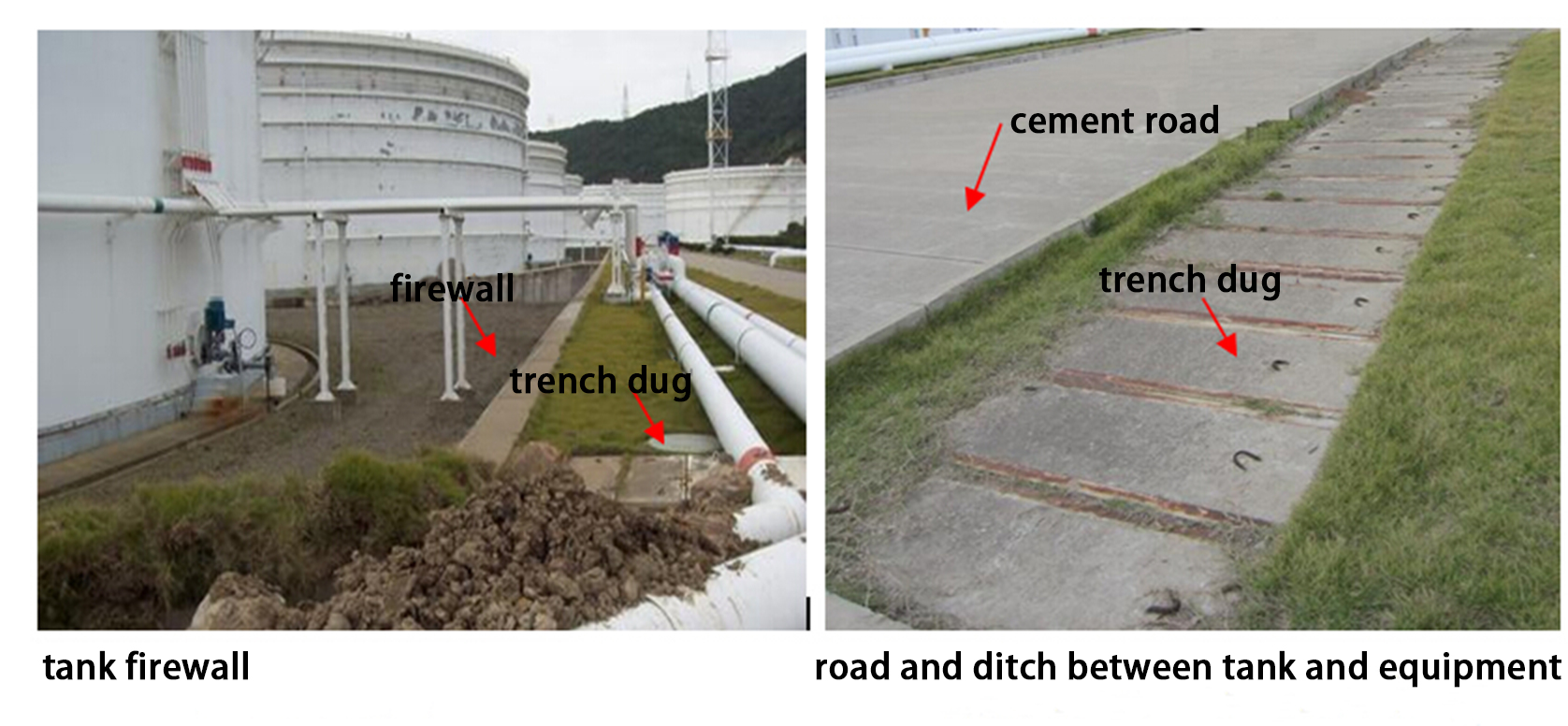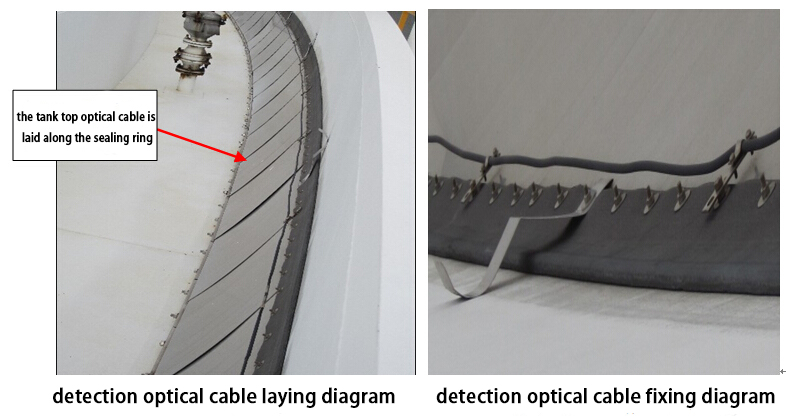Optimal monitoring with unique fire alarm (fire detection and early warning)
Petrochemical storage tank temperature monitoring
With the increase in the storage capacity of chemical tanks, there are more and more large-scale chemical storage tanks in domestic chemical plants. The safety of chemical storage tanks has always been a highly regarded issue by various departments and enterprises in the chemical industry.
Currently, the construction of chemical storage tanks in China mainly adopts floating roof tanks and spherical tanks. The top of the floating roof oil tank is equipped with secondary sealing technology, but it is not completely sealed, and there is a possibility of slight leakage of chemical liquids and gases from the sealing ring. These leaked gases are prone to fire under natural conditions such as high temperature and lightning. According to the national standard "Design Specification for Petroleum Reserve Depot GB50737-2011," section 8.6.2 clearly stipulates that fire automatic detection devices should be installed on oil tanks, and the detection area of fire detectors should be divided according to the requirements of fire extinguishing system interlocking control. When using fiber optic temperature detectors, the fiber optic temperature detectors should be installed above the secondary sealing ring of the floating disc of the oil tank. This requirement also applies to chemical storage tanks.
Distributed Temperature Sensing (DTS) is a new generation of linear fiber optic temperature sensing or detection technology widely used internationally. It has the advantages of intrinsic explosion-proof, strong resistance to electromagnetic interference, lightning protection, high measurement accuracy, light weight, and small size. In particular, DTS is a continuous distributed temperature sensing fire detector that can measure the temperature at any point along the fiber optic cable, without measurement blind spots. The fiber optic cable serves as both the transmission medium and the sensing element, eliminating the need for additional temperature sensing components. It has simple installation and high reliability. Its performance is superior to traditional linear temperature detectors, making it suitable for chemical storage tank fire monitoring applications.
The latest generation of DTS, a distributed fiber optic sensor, belongs to continuous distributed non-electrical detection technology. It has mature and advanced technology and effectively overcomes the drawbacks of the aforementioned fiber optic grating detectors. The specific advantages are as follows:
(1) The fiber optic cable is the sensor and has no fusion points, ensuring high reliability: The fiber optic cable itself is the temperature sensor, playing the role of a temperature detector and serving as an important role in signal transmission, achieving integration of "transmission" and "sensing." Due to the absence of additional sensing elements, there are no fusion points in the sensing fiber optic cable, ensuring high reliability.
(2) Continuous distributed measurement with no measurement blind spots: DTS belongs to continuous distributed measurement, providing temperature information at every point along the sensing fiber optic cable. Currently, the distance interval between adjacent temperature points can be as high as 0.25m, ensuring rich temperature information with no measurement blind spots. Furthermore, based on continuous temperature analysis, it can achieve regional temperature difference alarm modes.
(3) Low post-maintenance workload: The sensing fiber optic cable of DTS is designed based on outdoor communication fiber optic cables, which can have a lifespan of up to 30 years. The core components of DTS measurement host (such as light source, splitter, etc.) are all made of communication-grade devices with a design lifespan of 100,000 hours (greater than 10 years). The host is also equipped with a built-in temperature calibration unit and fault self-check module, ensuring stable and reliable temperature measurement.
The application schematic diagram of distributed temperature sensing (DTS) is shown below:

Guidelines for construction of temperature measurement fiber optic cables for petroleum storage tanks:
The detection fiber optic cable is led out from the equipment room through a splice box and buried underground to the bottom of the storage tank. Prior to burying the cable, a trench needs to be dug on the ground with a depth of approximately 0.5m-1m. The detection fiber optic cable and the protective galvanized steel pipe are laid in the trench, and after the laying is completed, the excavated soil is backfilled. There is a firewall at the edge of the storage tank, and a cement road separates the equipment room from the tank. This has some impact on the installation of the detection fiber optic cable, and the pre-dug trench should be utilized during the installation.

After the fiber optic cable is laid to the bottom of the storage tank, it is connected to the top of the tank through a galvanized steel pipe fixed to the side of the tank. The bend sections use explosion-proof metal hoses for connection. The galvanized steel pipe on the side of the tank is fixed to another galvanized steel pipe on the tank wall.
For the temperature measurement fiber optic cable on the top of the tank, it is laid along the sealing ring of the tank top. Existing screws on the sealing ring are used to secure the detection fiber optic cable with iron plates. The diagram below illustrates the installation process:






